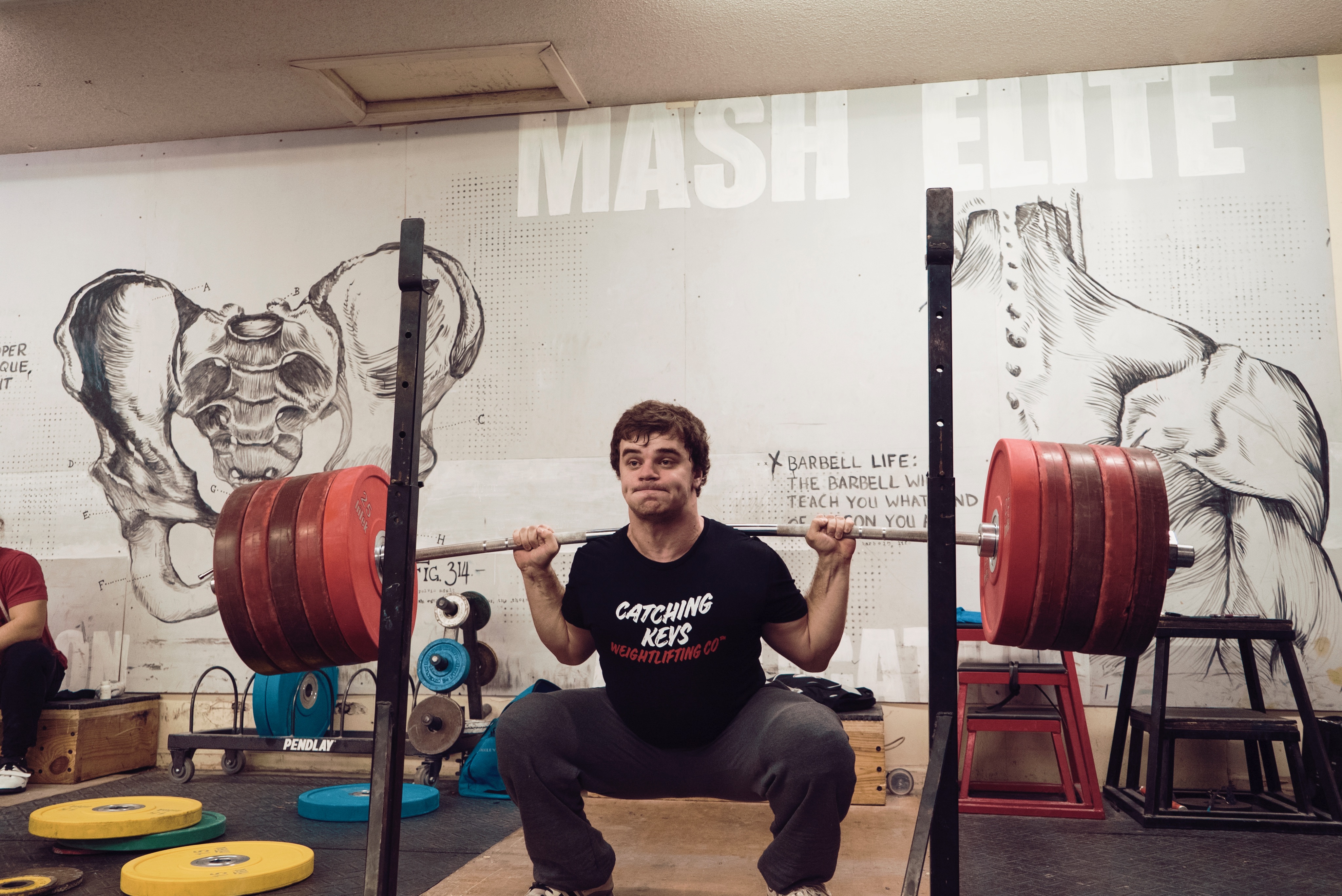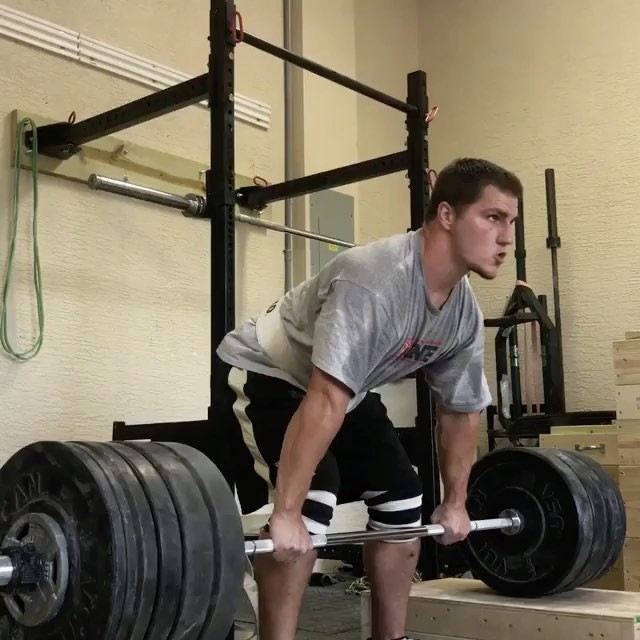Now is the best time ever to join the Mash Mafia Online Team. Our Online Team is by far the most successful Online Team in America. Two of our World Team Members are trained primarily Online. Tommy Bohanon, starting fullback for Jacksonville Jaguars is trained primarily Online. Check out the Christmas Specials at:
==> https://www.mashelite.com/christmas-specials/
===========================================================================================
Max Out or Not? That’s the Question!
by Coach Travis Mash, USAW Senior International Coach
In the strength and conditioning world, coaches like to debate whether or not a program should have athletes max out or simply stick with a 3RM. This question has always baffled me because I don’t understand how a 3-repetition maximum is any safer than a one-repetition maximum. Most people can perform three repetitions with 90% and above especially the population that is most debated (high school and collegiate athletes). So let’s suppose your maximum back squat is 400 pounds. Are you telling me that 400 pounds for one repetition is exponentially riskier than 360 pounds for three-repetitions? I’m not buying it.
I have been a strength athlete for over thirty years. In my experience I have always had a better chance of breaking down during a heavy repetition maximum. It’s simply easier to keep form for one-repetition. It’s also easier to coach a one-repetition maximum. If you see things slow down, you know to cut things off. In a repetition maximum, one set can look great, but on the next set the athlete breaks down on repetition number two.

I think that this is a good time to shed some light on one major fact. It’s not usually load (weight being lifted) that causes the problems. It’s any load on a bad movement pattern that causes the problems. Repetition maximums give the athletes much more chance for technique breakdowns, and then the risk goes through the roof. Faulty movement patterns and asymmetries are the culprits for the majority of injuries in the weight room. I don’t think that I have ever seen someone get hurt with a perfect movement pattern.
At the end of the day, I don’t really care what you do. However there are two things that must be considered:
• You have to test to quantify absolute strength progress
• You have to test if you program with percentages
Notice I said “absolute strength”. If you want to focus on strength speed or speed strength, you can really test with the same weight focusing solely on an increase in velocity. Now for field and court athletes I agree speed is important. However absolute strength will always be king especially in the first two years of an athlete’s strength training life. In those first two years, if an athlete’s absolute strength increases, so will all the other zones of strength. Even after the first two years, you have to spend time in those higher percentages to get stronger. A stronger muscle is capable of being faster than a weak muscle.
If you program with percentages, there is no way around finding absolute strength increases either with a true one-repetition maximum or finding a 3 or 5-repetition maximum and using a formula to predict the 1RM. The Epley Formula is one such formula:
1Repetition Maximum = (weight lifted * number of reps lifted * .033) + weight lifted
Example: You lift 400lb x 3!
400lb x 3= 1200lb x .033 = 39.6 +400lb = 439.6lb
Predicted Maximum is 439.6 lb
However in my experience this is so varied from one person to another. I still say that finding a true one-repetition maximum is better as long as the desired movement pattern is maintained the entire time. Most coaches that have coached for any length of time simply know when athletes are about to breakdown by the speed of the bar and the body language of the athlete.

There is one way to take the guessing out of things, and that is with velocity. You can add a velocity minimum to accompany the one-repetition maximum. For example you can prescribe that your athletes max out with a .3 m/s minimum. This is a pretty safe speed for squats, presses, and pulls. Once the athlete hits a weight at or near .3 m/s, they are done maxing out. A few weeks later when you want to test a new maximum, you simply keep that .3 m/s minimum standard to keep the test equal.
Whether you want to max out or perform a 3-repetition maximum, that’s up to you. I simply recommend that you pay attention to bar speed, movement patterns, and the body language of your athletes. Trust me, they can get hurt just as easily if not easier with a 3-repetition maximum than a one-repetition maximum. If you make sure that your athletes maintain minimum bar speeds and optimal movement patterns, you can almost eliminate injuries that are typical during testing procedures.
Let me leave you with this bit of advice. No matter what you are doing or what you believe, I suggest challenging those actions and those beliefs on a daily basis. I watch so many coaches spout off during debates like this one simply answering with opinions that they conjured from listening to someone else without ever thinking for themselves. Maybe they were reading EliteFTS and a group of their favorite coaches were saying to never max out, so from that day forwards they believed that no one should max out. The biggest thing that they forgot to do in this instance is asking the question “why”.
I have heard several coaches that I respect say that maxing out with a one-repetition max is dangerous and should never be used. They went on to say how much safer a three-repetition maximum is, and so many of you followed blindly. Look, do what you want, but this one makes no sense to me. However, you know my motto. “Do what you want!”
If you guys live near Lewisville, NC or the surrounding area, we are open for business at LEAN Fitness (home of Mash Elite and TFW Winston-Salem). If you want to try us out for a FREE Week or have any questions, email us at leanfitnesssystems@gmail.com.
================================================
Check out one of our 14 Books on topics like programming, conjugate method, injury prevention, nutrition, mindset, and competition prep at:
==> https://www.mashelite.com/ebooks/
or Check out one of our Online Team Christmas Specials at:
==> https://www.mashelite.com/christmas-specials/
================================================